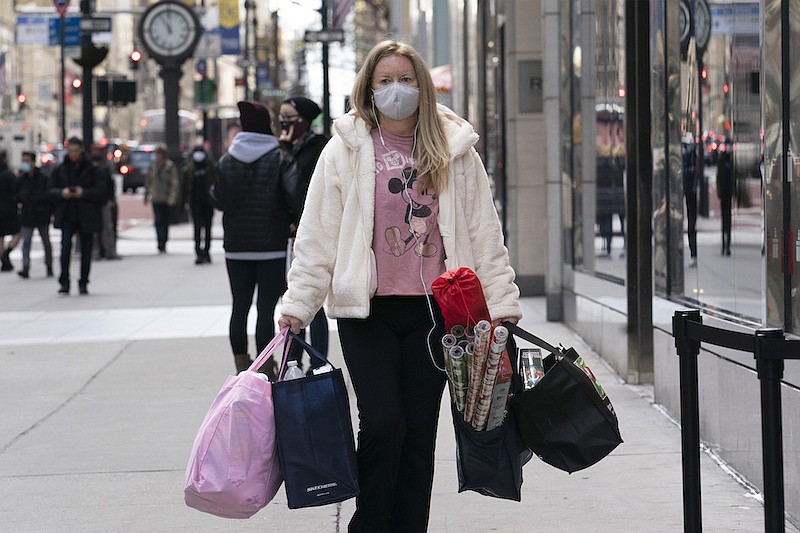Personal income was up a remarkable 10% in January, the Commerce Department reported Friday, but the increase was almost entirely attributable to the $600 government relief checks and unemployment insurance payments.
Spending last month increased by a healthy 2.4%, largely because of purchases of goods, while purchases of services lagged as the pandemic continued to weigh on the leisure and hospitality industries.
It was the biggest jump in personal income since April, when the figure was lifted by nearly $3 trillion in government transfer payments. That was mostly in the form of $1,200 checks that millions of households received from the federal government.
The January data was the latest sign of the economy's march forward, a trend also seen in recent reports on retail sales and orders of durable goods. Some economists are now predicting not just a period of growth after the pandemic, but perhaps even a post-COVID boom.
Yields on government bonds, the basis for mortgage rates and corporate borrowing, have risen sharply this month as investors anticipate a quick pickup in growth this year. Yields on 10-year Treasury notes, for example, which were below 1% for much of 2020, have climbed to roughly 1.5% in recent days.
That sudden jump also reflects concerns that the growth would cause inflation to become a problem, which could prompt the Federal Reserve to cut back on its measures to bolster the economy. A change of posture from the Fed is likely to be seen as bad news for stocks, and trading on Wall Street has been turbulent this week as investors react to the sudden moves in bond yields.
At this point, however, the report Friday showed no sign that inflation was spinning out of control. Consumer prices were up 1.5% in January from a year earlier, well below the Fed's 2% target.
On Thursday, John C. Williams, president of the Federal Reserve Bank of New York, said he felt that a recovery could be achieved without inflationary worries.
"Fiscal support, combined with highly favorable financial conditions and steady progress on vaccinations, are all reasons to be optimistic the economy will experience a strong recovery this year," he said in a speech. "With our economy and the global economy still far below full strength, I expect underlying inflationary pressures to remain subdued for some time."
The January report on income and spending underscored the importance of government help for the economy, said Diane Swonk, chief economist for the accounting firm Grant Thornton.
"Technically, you could say we're recovering," she said. "But the patterns in both income and spending point out the fragility of the recovery without aid to bridge these waters that are poisonous."
There are already some strong signals that a consumer spending spree is coming.
The combination of government aid and reduced spending because of the pandemic led to a big buildup in savings last year, said Jay Bryson, chief economist for Wells Fargo, which could prompt Americans to spend more in the future. He estimates that U.S. households were sitting on $1.5 trillion in extra savings even before the latest round of stimulus payments.
"People were getting all this money, and they had no place to spend it because the economy was shut down," he said. "So what did they do? They literally put it in the bank."
The report showed that households had $3.9 trillion in savings in January, up from $2.3 trillion in December and $1.4 trillion last February, before the pandemic began.
That cash stockpile will grow even larger if Congress passes another round of aid, as now seems likely. But as the pandemic ebbs, Americans are likely to start spending again - turning the built-up savings into fuel for the economy.
"We just think there's going to be this huge pent-up demand for services that's going to be funded by that excess savings," Bryson said.
